California has been one of many recycling pioneers in the USA and continues to foster a green culture through the introduction of Assembly Bill 1826. The Golden State joins the increasing number of states who have administered mandates and legislation to businesses in a bid to conquer the excessive volume of organic waste production. To help you improve your recycling rates, we’ve created some useful tips to help you implement a successful organic waste program.
From April 1 2016, AB 1826 requires commercial producers of at least 8 cubic yards of organic waste per week to implement an organic waste recycling program. Common businesses who produce this volume of organic waste usually include large grocery stores, hotels, and convention centers.

Preserving the environment is becoming increasingly important so by choosing to recycle your organic waste, it will divert unnecessary material from the landfill as well as help to reduce greenhouse gas emissions. Once you segregate this waste, it can be transformed to produce nutrient-rich compost.
If you’re looking to comply with the mandate or just want to improve your organization’s recycling rates, here’s some food for thought when it comes to choosing your organic waste containers:
- Conduct a waste audit
- Utilize graphics
- Determine optimal siting
- Educate your employees
- Conduct an appraisal
- Are all of your employees aware of the containers and the correct circumstance to use them?
- Are there any additional areas where organic waste containers could be placed? Or do existing containers need to be moved to accommodate employee behavior?
- Is your aggregate waste production reducing as organic waste is segregated?
- Have you managed to attain any recycling targets?
The first step is to determine the volume of organic waste you actually produce. This will provide you with an idea of the required capacity and quantity of bins that is needed to accommodate your waste.
Visual cues are pivotal when it comes to encouraging your employees to recycle. It acts as a reminder to make positive choices when disposing of their waste and ensures all of your employees are aware of what waste is classified as ‘organic’. We also provide the option to personalize your waste container with your company logo!
It is important to place your containers in concentrated areas where organic waste is most likely to accumulate. For example, this could be large kitchens, cafeterias, and meeting rooms. By placing your waste bins in common areas, you are providing employees with the opportunity and convenience to recycle their organic waste.
Not everyone may be aware of the new assembly bill or the positive impact recycling organic waste has. This is why it is important to make your employees aware of your organic waste program as well as highlight the benefits of utilizing it. Humans are naturally competitive – so why not set some recycling targets among your departments?
It is important to oversee your recycling efforts to determine any potential improvements that could be made. Try reviewing the previous steps and ask yourself thought-provoking questions such as:
We recommend...
| Eco Nexus® 23G | Nexus® City 64G | Nexus® 8G | ||
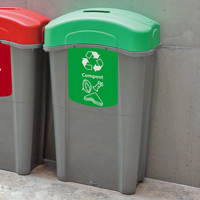 |
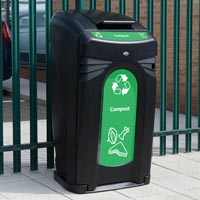 |
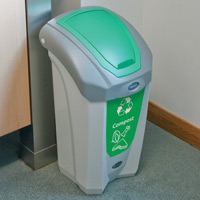 |
||
| Learn more | Learn more | Learn more |
| Nexus® 36G | Nexus® 13G | Nexus® Shuttle | ||
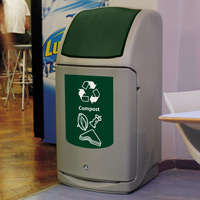 |
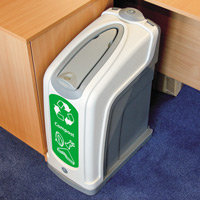 |
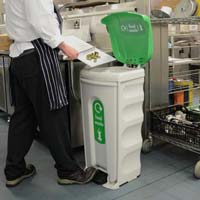 |
||
| Learn more | Learn more | Learn more |




